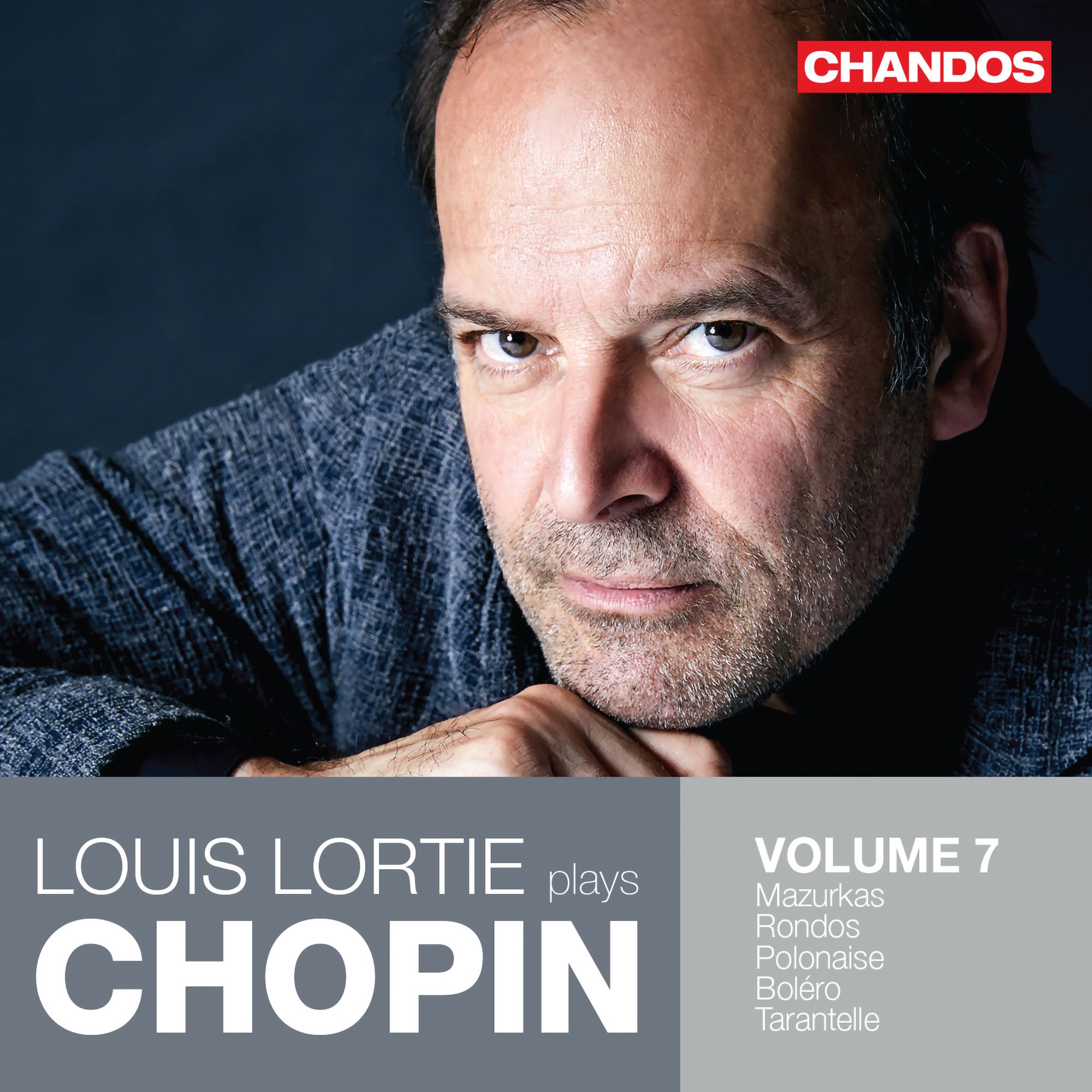Louis Lortie's Chopin on Chandos: Volume 7
A brilliant disc in each and every way

PIanist Louis Lortie's Chopin series on Chandos has amassed a good frew volumes under its belt: this is number seven. So why cover this one?
Because Lortie here plays some of the lesser-known Chopn, music that holds great delight: the Rondo à la Mazur (to fit in with the Mazurkas that make up the bulk of the programme), the Op. 16 Rondo, the Tarantelle and the Boléro. They are amazing, warm, wonderful pieces, all of them, and rarely heard in programmes today, unfortunately.
Running through the programme is the concept of “nationality”; we have native Mazurkas and a Poloaise, but we also have a Boléro and a Tarantelle: so, Poland, Italy and Spain.
The programme actually opens with the Four Mazurkas of Op. 17, Chopin's third published set of this dance form. The most sophisticated is the third, and offers an example of Lortie's art. He nails the work's duality of outward simplicity and inward complexity in this four-minute Largo assai:
.. while in the fourth, there’s a real sense of almost deconstruction of the form - magnificent vision from Lortie:
Out of that comes the eight-minute-plus Rondo à la Mazur, astonishingly written at the age of 16 (1826/7). The work sparkles, entertains and intrigues: the “à la Mazur’ part of the title allows for contrast to the characteristic legerdemain passagework. Lortie is supreme at delivering with a light touch at speed.; his approach to the work’s close is magnificently done, too. Worth pointing out the excellence of the recording of Lortie’s Fazioli F 278 (Producer and Sound Engineer Jonathan Cooper):
This piece is nicely complemented by the Rondo in E flat, Op. 16 (c. 1833), an expansive work of many contrasts. Lortie’s passagework just after the one-minute mark is an object lesson in clarity: he seems to know exactly the effect Chopin was after, or at least, he certainly convinces is as we listen. The piece has quirky monets, and the odd gesture one might justifiably link to the writing in Chopin’s piano concertos:
I love booklet note annotator Jeffrey Kallberg’s way of explaining Chopin’s nationalism. I quote:
Besides actively shaping the sound of his own Polish national music, Chopin also trafficked in established tropes that evoked the music of other places.
A succinct way of explaining this as we move into the Boléro of 1833, Tinges of Spain here, despite the French way of the title. We hear the struming of a bolero particularly in the left-hand in the contrasting section. But what a beautiful piece this is, full of joie de vivre, espeially in Lortie’s spirited performance. Notable here is his pedal work, never blurring, alway superb:
Despite its later opus number, the three Mazurkas we hear as a group from Op. 68 date from 1830, 1827 and 1829 respectively. I like Lortie’s grand way with the first, a C-Major Vivace full of contrasts. No. 2, a Lento in A-Minor is particularly famous, with a Lydian raised fourth giving the music its characteristic flavour:
Chopin’s fifth set of Mazurkas was his Op. 30 (1837). All are short, but their brevity is because of Chopin’s laser concision. They appear almost as distillations of the Mazurka form (to my ears at least). The Allegretto B-Minor is absolutely mesmeric under Lortie’s fingers (and just listen to the tightness of his ornaments!):
The final Mazurka of this set is shot through with a poignancy that could only come from Chopin’s pen.
One of Chopin’s most fascinating pieces is the Tarantelle, Op. 43 (A flat, 1841). The booklet notes remind us that the vogie for the tarantella was partly due to Auber’s 1828 grand opera La Muette de Portici; this influenced Rossini directly in his vocal tarantella La Danza, which in turn influenced Chopin in the present instance. Let’s use this Classical Explorer space to actively hear this lineage (you’ll be amazed at how clear it is). Maybe hear the Lortie first, then go back to Auber, then Rossini then back to Chopin and see if you hear the Chopin Tarantelle in a different way!
Here’s an Act III Tarantella from the Auber (played by the Berlin Radio Symphony Orchestra under Sylvan Levin):
.. now, let’s hear the Rossini La Danza with the wonderful Cecilia Bartoli:
.. and finally, Lortie:
Quite a long post today, but worth it for the depth of understanding this release can bring to Chopin and his output. The three Mazurkas, Op. 63 (1846) is the last set published by Chopin and is replete with intrigue. We feel that characteristic shift of late Chopin into a place yet more individual and ruminative. We are still identifiably in mazurka territory:
Lortie brings true inisght to the central F-Minor Lento, which appears to speak of whole worlds in its 1"32 duration before the final Allegretto in C sharp minor. Here Chopin really opens the envelope despite its innocuous beginnings by introducting a canon at the octave:
The programming of this disc is brilliant. Lortie effectively “ends” with the great A flat Polonaise in a fine performance, more nuanced than most (this is the so-called “Héroïque.” Op. 53) and with left-hand octaves that hold so much potential energy. As an ancore, Lortie plays the “missing” Mazurka from Op. 68 (remember we only heard Nos. 1-3 earlier in the programme). Possibly written in 1846, is breathes a different air from its Op. 68 brethren:
A brilliant disc in each and every way. And, incidentally, brilliantly persuasive around the choice of piano as well: this Fazioli seems to carry each and every shading Lortie brings to Chopin.
Chopin Volume 7, Lortie (Chandos)